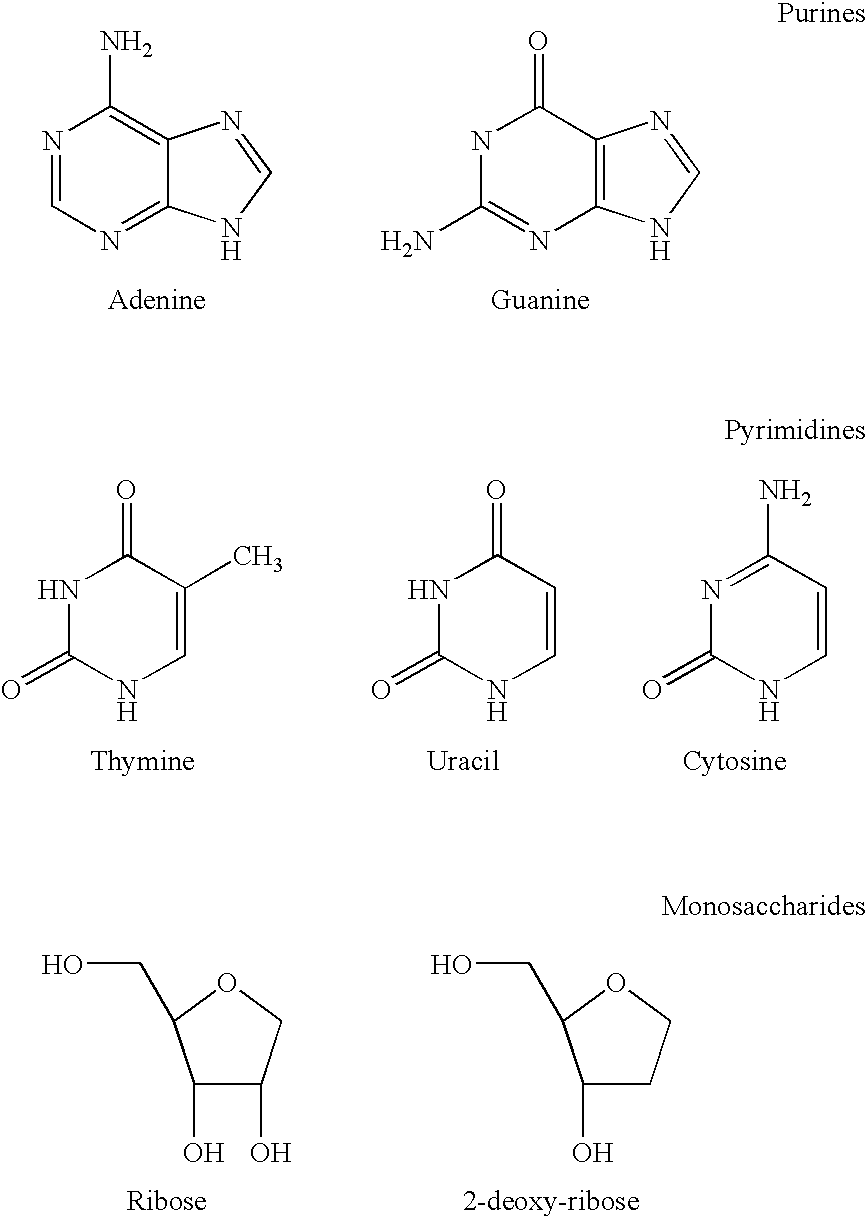Dioxolane derivates for the treatment of cancer
a technology of dioxolane and derivates, which is applied in the direction of biocide, group 5/15 element organic compounds, drug compositions, etc., can solve the problems of inferior specificity for the treatment of the actual disease in question, low activity, and nocleoside analogues
- Summary
- Abstract
- Description
- Claims
- Application Information
AI Technical Summary
Benefits of technology
Problems solved by technology
Method used
Image
Examples
example 1
[0023]The cervical cancer cell line HeLa / mut was seeded, 5×103 cells per well, in 96-well-plates. The medium was RMPI 1640 with 2 mM Glutamine and 10% Foetal Bovine Serum. 24 hours later the test compounds were added in 6 concentrations. The cells were incubated for 4 days. The MTT solution was added to each well and incubated for 4 hours. The samples were read by an ELISA reader at 540 nm. The IC50 values were determined from growth curves. The test compounds were troxacitabine elaidic amid, troxacitabine petroselaidoate, troxacitabine-petroselaidic amide and troxacitabine γ-linolenoate. Surprisingly the activity of troxacitabine petroselaidoate and petroselaidic amide was 20 fold more active than troxacitabine elaidic amid.
IC50 μM ±CompoundStandard Deviationtroxacitabine elaidic-amide3.58 ± 2.56troxacitabine petroselaidoate0.18 ± 0.12troxacitabine-petroselaidic amide0.15 ± 0.07troxacitabine γ-linolenoate0.83 ± 0.59
example 2
[0024]The human cervical cancer cell line HeLa / mut and the adriamycin resistant cell line HeLa / mut / Adr were seeded, 5×103 cells per well, in 96-well-plates. The medium was RMPI 1640 with 2 mM Glutamine and 10% Foetal Bovine Serum. 24 hours later the test compounds were added in a final volume of 20 μl to the cells, in six different concentrations. The cells were incubated for 4 days. MTT solution was added to each well and incubated for 4 hours. The samples were read by an ELISA reader at 540 nm. The IC50 values were determined from growth curves. The resistance factor is the IC50 in HeLa / mut / Adr vs. IC50 in HeLa / mut. The test compounds were troxacitabine-elaidic amide and troxacitabine-petroselinic amide. Surprisingly we found the troxacitabine-petroselinic amide to be independent of the adriamycin resistance, with a resistance factor of 1.0, compared to 5.8 for troxacitabine-elaidic amide.
Resistance factor =Compound(IC50 HeLa / mut / Adr) / (IC50 HeLa / mut)troxacitabine-elaidic amide5.8t...
example 3
[0025]The U937 and THP-1 cell lines were seeded, 20 000 cells per well, in 96-well-plates. 50 μl medium ( ) was added to each well. At the same time test compounds were added in 5 different concentrations and incubated for 48 hours. The CellTiter 96® Non-Radioactive cell proliferation assay (Promega) was used to study the cytotoxicity of test in these cells. This assay is a colorimetric method for determining the number of viable cells in proliferation or chemosensitivity assays. It is composed of solutions of a novel tetrazolium compound (3-(4,5-dimethylthiazol-2-yl)-5-(3-carboxymethoxyphenyl)-2-(4-sulfophenyl)-2H-tetrazolium, inner salt; MTS) and an electron coupling reagent (phenazine methosulfate; PMS). MTS is bioreduced by cells into a formazan product that is soluble in tissue culture medium. The absorbance of the formazan at 490 nm can be measured directly from 96 well assay plates without additional processing. The quantity of formazan product as measured by the amount of 49...
PUM
| Property | Measurement | Unit |
|---|---|---|
| aqueous solubility | aaaaa | aaaaa |
| resistance | aaaaa | aaaaa |
| concentration | aaaaa | aaaaa |
Abstract
Description
Claims
Application Information
 Login to View More
Login to View More - R&D
- Intellectual Property
- Life Sciences
- Materials
- Tech Scout
- Unparalleled Data Quality
- Higher Quality Content
- 60% Fewer Hallucinations
Browse by: Latest US Patents, China's latest patents, Technical Efficacy Thesaurus, Application Domain, Technology Topic, Popular Technical Reports.
© 2025 PatSnap. All rights reserved.Legal|Privacy policy|Modern Slavery Act Transparency Statement|Sitemap|About US| Contact US: help@patsnap.com



